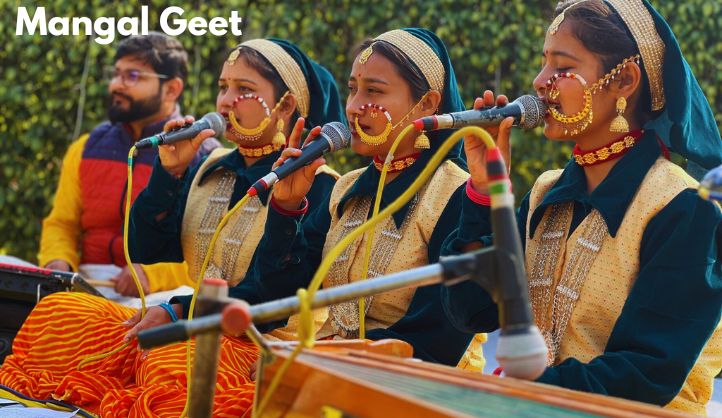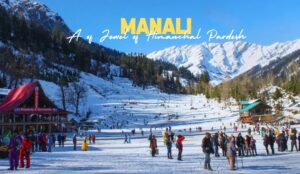Imagine a serene village nestled in the mountains of Uttarakhand. The sunsets, cast a golden glow over the snow-capped peaks, and the air is filled with the rhythmic sounds of traditional songs. These songs, known as Mangal Geet, hold a special place in the hearts of the people. They are more than just melodies; they are an integral part of the cultural fabric, celebrating life’s joyous moments and invoking blessings.
What is Mangal Geet?
The Essence of Mangal Geet
Mangal Geet are traditional folk songs sung during auspicious occasions in Uttarakhand. The term “Mangal” means auspicious or fortunate, and “Geet” translates to song. These songs are a crucial part of ceremonies like weddings, birth celebrations, and other festive events. Their primary purpose is to invoke blessings and ensure that the event proceeds smoothly and joyously.
Historical Background
The tradition of Mangal Geet dates back centuries. Passed down through generations, these songs have been preserved in the oral tradition, with each region adding its own unique flavor. They reflect the socio-cultural environment of Uttarakhand, encapsulating the values, beliefs, and practices of its people.
Cultural Significance
Celebrating Life’s Milestones
Mangal Geet is sung during various life events, marking significant milestones with joy and reverence. During weddings, for instance, these songs are performed to bless the couple, wishing them a happy and prosperous life together. Similarly, the birth of a child is celebrated with Mangal Geet, welcoming the new life with open arms and hopeful hearts.
Invoking Divine Blessings
In Uttarakhand’s deeply spiritual society, Mangal Geet are more than just celebratory songs; they are prayers set to music. The lyrics often praise deities, seek their blessings, and express gratitude. This spiritual aspect of Mangal Geet highlights the community’s belief in divine intervention and the importance of staying connected to their cultural roots.
Musical Characteristics
Melodic Structure
Mangal Geet are characterized by their simple yet captivating melodies. The tunes are easy to follow, allowing everyone to join in, regardless of their musical expertise. This inclusiveness is a key feature, making these songs a collective expression of joy and community spirit.
Instrumentation
Traditional instruments like the dhol (a type of drum), damru (a small two-headed drum), and harmonium often accompany Mangal Geet. These instruments add a rhythmic foundation and melodic support, enhancing the overall musical experience. The combination of these instruments with the human voice creates a rich, immersive soundscape.
Lyrics and Themes
Common Themes
The themes of Geet are diverse, yet they all share a common thread of positivity and goodwill. Some songs narrate mythological stories, while others describe everyday life and nature’s beauty. Love, happiness, prosperity, and divine blessings are recurring motifs, reflecting the community’s collective aspirations and values.
Language and Dialects
Geet are primarily sung in Garhwali and Kumaoni, the two main dialects of Uttarakhand. The use of local languages not only preserves linguistic heritage but also makes the songs more relatable and meaningful to the people.
The Role of Women in Mangal Geet
Custodians of Tradition
Women play a pivotal role in the tradition of Geet. They are often the main performers, passing down the songs from one generation to the next. This matrilineal transmission ensures that the rich heritage of Geet continues to thrive.
Social Bonding
Singing Geet is a communal activity, bringing women together and strengthening social bonds. These gatherings provide a platform for women to share their joys, sorrows, and experiences, fostering a sense of solidarity and community.
Modern-Day Relevance
Adapting to Change
While Geet are rooted in tradition, they have also evolved to stay relevant in contemporary times. Modern renditions may incorporate new instruments or styles, appealing to younger generations while preserving the essence of the original songs.
Preserving Heritage
Efforts are being made to document and record Geet, ensuring that this precious cultural heritage is not lost. Organizations and individuals are working to collect these songs, providing a repository for future generations to learn from and enjoy.
Personal Anecdotes
A Wedding Memory
I remember attending a wedding in a small village in Uttarakhand. As the evening approached, the air filled with the sound of geet. The women, dressed in vibrant traditional attire, sang with such passion and joy that it was impossible not to be moved. The groom’s family, beaming with pride, joined in, creating a beautiful harmony that resonated throughout the village. It was a moment of pure, unadulterated happiness, encapsulating the true spirit of Geet.
A Child’s Birth
In another instance, I witnessed the celebration of a child’s birth. The family and neighbors gathered, singing Geet, to welcome the newborn. The songs were filled with blessings and good wishes, creating an atmosphere of warmth and love. It was a touching reminder of how deeply these songs are woven into the fabric of everyday life in Uttarakhand.
Conclusion
Mangal Geet of Uttarakhand are more than just songs; they are a living tradition that celebrates the joyous moments of life with music and community spirit. They connect people to their roots, invoking divine blessings and fostering social bonds. As we move forward in time, it is essential to preserve and cherish these beautiful songs, ensuring that they continue to bring joy and prosperity to future generations.
FAQs about Mangal Geet
1. What are Mangal Geet?
Mangal Geet are traditional folk songs sung during auspicious occasions in Uttarakhand, such as weddings and births, to invoke blessings and celebrate joy.
2. What instruments are used in Mangal Geet?
Traditional instruments like the dhol, damru, and harmonium often accompany Mangal Geet, adding rhythmic and melodic support to the songs.
3. Who primarily sings Mangal Geet?
Women are the main performers of Mangal Geet, playing a crucial role in preserving and passing down this musical tradition through generations.
4. In what languages is Mangal Geet sung?
Mangal Geet is primarily sung in Garhwali and Kumaoni, the two main dialects of Uttarakhand.
5. How has Mangal Geet adapted to modern times?
Mangal Geet has evolved by incorporating new instruments and styles to appeal to younger generations while maintaining the essence of the original songs.





